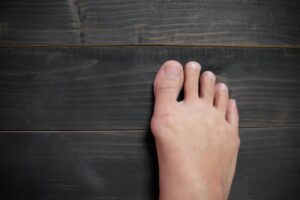Have You Tried One of These Three Helpful Treatments for Charcot Foot?

When you have diabetes, many serious complications, including peripheral neuropathy and nerve damage, can develop in your feet. If those issues don’t heal properly, you’re at risk for developing an even more severe complication called Charcot foot.
Charcot foot is a serious medical condition, but if you’re diagnosed with it, the right treatment can save your mobility and feet. Experienced Charcot foot specialists Ryan Golub, DPM, and Zachary Flynn, DPM, AACFAS, of Arizona Foot Health in Phoenix, Arizona, explain three of the most effective treatments for Charcot foot.
What is Charcot foot?
Charcot foot is a rare but serious condition that can develop as a complication of neuropathy or other nerve damage in your feet. You’re at the highest risk of getting Charcot foot if you have diabetes or another condition that decreases the sensitivity in your foot, like a spinal cord injury or Parkinson’s disease.
Charcot foot usually develops from open sores, infections, or injuries that don’t heal properly. This causes the bones, tissues, and joints in your foot to change shape and potentially become deformed. Without treatment, Charcot foot can lead to serious consequences, up to and including amputation.
Charcot foot symptoms
The earlier Charcot foot is caught, the better. Make an appointment for an evaluation at Arizona Foot Health if you have any of the following symptoms, especially if you’re diabetic:
- Your foot looks red
- Your foot is warm to the touch
- Your foot has swollen up
In later stages, your foot can look as if it lost shape, including curling toes, a twisted ankle, and a dropped arch. Our podiatrists diagnose Charcot foot with X-rays and an examination of your foot.
Three Charcot foot treatments
With prompt diagnosis and the right treatment plan, Charcot foot can heal over the course of several months. Depending on your specific needs, our podiatrists recommend one or a combination of these three effective treatments.
1. Rest
One of the most important ways to heal Charcot foot is to stay off it for as long as possible. To rest your foot and help the swelling go down, our team often prescribes a modified activity schedule that keeps you at rest and limits how often you put weight on your foot.
2. Casts and special footwear
In addition to resting your foot as much as possible, our team might put your foot in a special cast to keep it from moving. Over a period of a few months, our team sometimes refits your foot into a new cast as the swelling goes down.
To move around while wearing a cast, our team either prescribes crutches, a wheelchair, or a walker to limit the amount of weight you bear on your foot. Once you remove the cast, our team might prescribe prescription shoes and custom orthotics to protect your foot.
3. Surgery
For more serious cases of Charcot foot, our team often recommends a surgical procedure called exostectomy, which removes bone deformities that protrude from your feet. If your foot is severely deformed, reconstructive surgery can restore your foot and avoid amputation.
The earlier Charcot foot is treated, the better. If you suspect you might have the condition, contact us to make an appointment.
You Might Also Enjoy...
The Achilles Heel
Given Arizona’s climate, patients are able to remain active year round. It’s why we all chose to live here. But…
Alleviating Back Pain and Other Benefits of Custom Orthotics You Didn’t Know About
Would you ever imagine that custom foot orthotics could improve your quality of life? That’s what many people say after…
9 Helpful Tips to Prepare Your Home Before Bunion Surgery
When moderate interventions, such as wearing wider shoes or using pads in your shoes, fail to ease your bunion pain…
When Should You Go to the Doctor for an Ingrown Toenail?
In most cases, you can nurse an ingrown toenail at home with over-the-counter pain medication, topical antibiotic creams, and soaking…
6 Home Exercises to Keep Your Ankles Strong
Ankles that feel wobbly and weak are vulnerable to injury. If you play sports, run, jump, or just walk often,…
Is Surgery My Best Option For Treating Bunions?
You have a bunion and it isn’t pretty, but if your bunion is small enough, or doesn’t hurt, you may…






